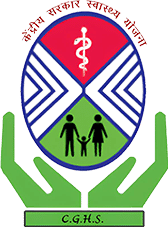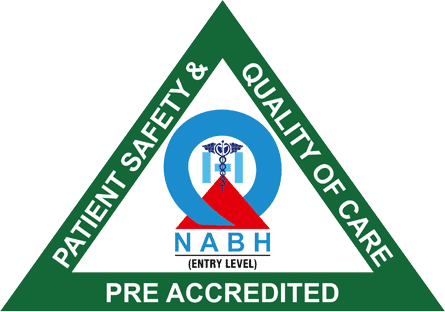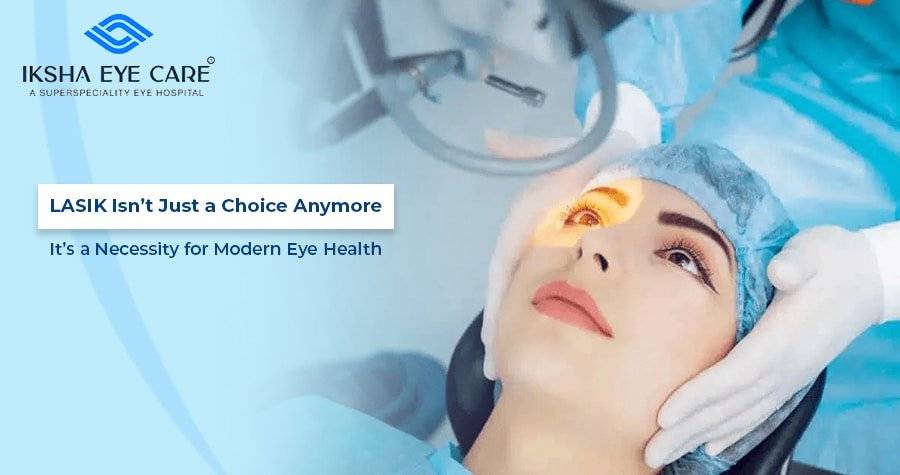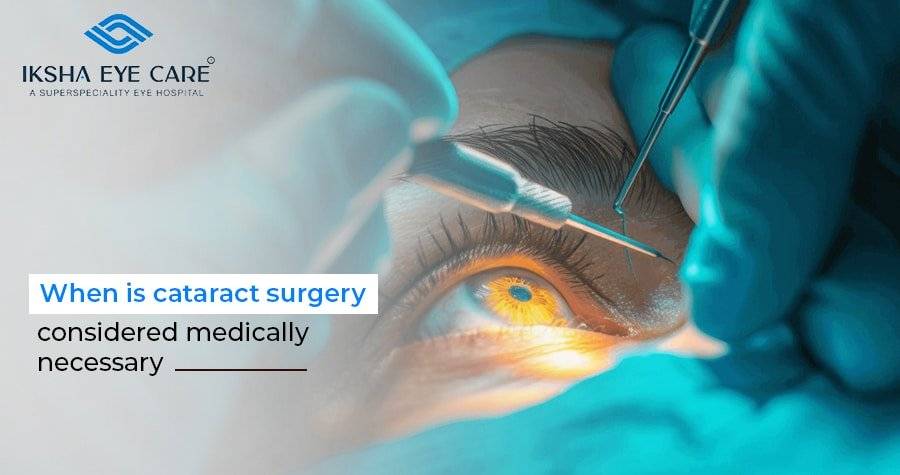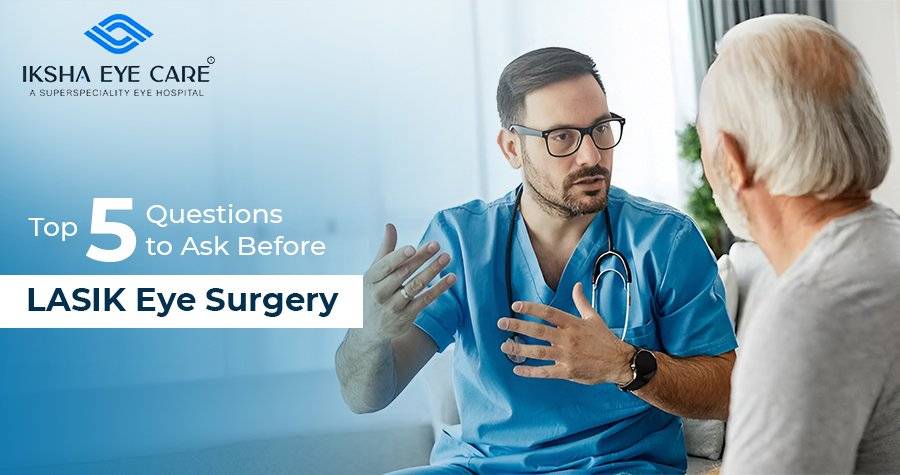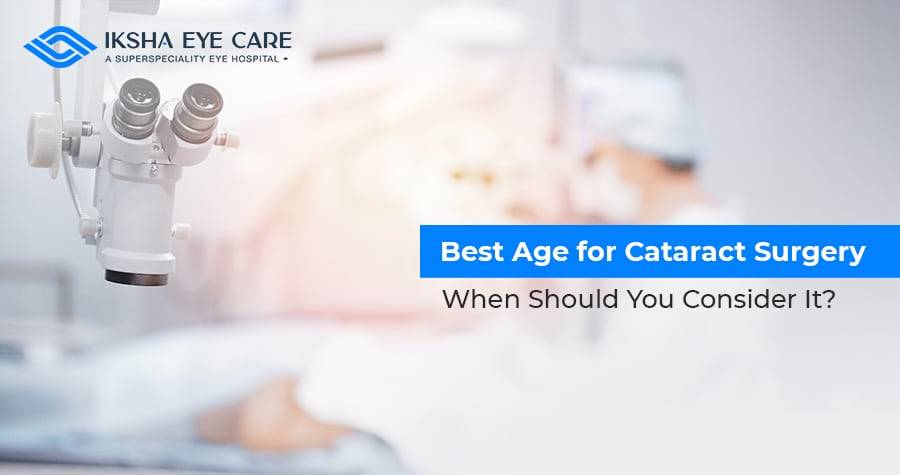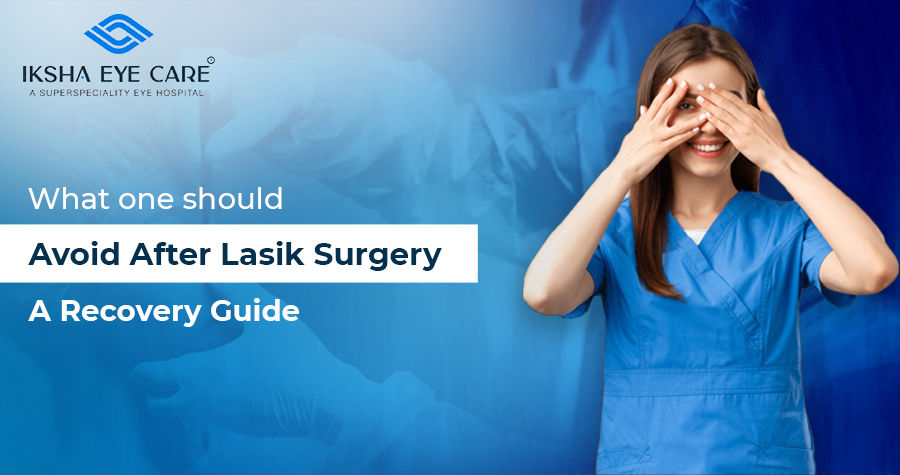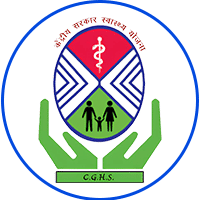Introduction: From Vision Correction to Vision Empowerment
In a world dominated by digital screens, late-night work sessions, and constant eye strain, clear vision is no longer a luxury it’s a necessity. Today, LASIK (Laser-Assisted In Situ Keratomileusis) has evolved beyond being a cosmetic or lifestyle choice. It has become a modern medical solution for individuals who want to maintain optimal eye health and performance.
At Iksha Eye Care, Mumbai, led by Dr. Bhushan Ghodke, a leading cataract, cornea, and refractive surgeon, LASIK is performed using advanced bladeless laser technology, ensuring precise, safe, and personalized outcomes for every patient.
1. Why LASIK Is More Than Just a Vision Correction Surgery
In the past, LASIK was often seen as an elective procedure for those who wanted freedom from glasses or contact lenses. But today, it’s much more it’s about maintaining eye health in an age where digital dependency has increased exponentially.
Why It’s Becoming a Necessity:
- Constant screen time strains the eyes, worsening myopia (nearsightedness) and astigmatism.
- Contact lens overuse can lead to dry eyes, allergies, and infections.
- Glasses can be impractical for professionals, athletes, and travelers.
LASIK provides a permanent and safe alternative, allowing you to live, work, and play without the constant burden of corrective eyewear.
At Iksha Eye Care, each LASIK treatment is customized based on corneal thickness, curvature, and lifestyle needs ensuring long-term clarity and comfort.
2. The Science Behind LASIK: How It Works
LASIK is a laser-based refractive surgery that reshapes the cornea the transparent front surface of the eye so light focuses correctly on the retina.
The Procedure Involves:
- Creating a thin corneal flap using a femtosecond laser (blade-free).
- Reshaping the underlying corneal tissue with an excimer laser.
- Replacing the flap, allowing natural healing without stitches.
The entire process takes less than 15 minutes per eye, with vision improvement visible within 24 hours. At Iksha Eye Care, this is done under advanced diagnostic guidance for maximum accuracy and minimal downtime.
3. Modern Lifestyle and Eye Health: Why LASIK Is Needed Now More Than Ever
Today’s lifestyle has led to a surge in digital eye strain and refractive errors. Children, teens, and adults alike are spending more time staring at screens, which accelerates myopia and visual fatigue.
LASIK Helps Combat:
- Screen-related eye fatigue
- Headaches from constant focusing
- Blurry or fluctuating vision due to refractive imbalance
In such cases, LASIK isn’t just for aesthetic freedom it becomes an essential treatment to maintain eye function and overall health.
4. The Health Benefits of LASIK
LASIK’s benefits go beyond eliminating glasses. It improves visual performance, ocular comfort, and even psychological well-being.
Key Benefits Include:
- Sharper, natural vision without corrective lenses.
- Improved depth perception and reaction time — ideal for sports and driving.
- Reduced risk of eye infections compared to contact lens wear.
- No more fogging or slipping glasses in humid conditions.
- Boosted confidence and productivity in both personal and professional life.
With Dr. Bhushan Ghodke’s expertise, Iksha Eye Care patients enjoy long-term clarity and comfort with minimal side effects.
5. Safety and Precision: LASIK at Iksha Eye Care
One reason LASIK has become a modern necessity is its high safety record. With the right technology and experienced surgeon, complications are extremely rare.
Iksha Eye Care Advantage:
- Advanced diagnostic systems like corneal topography and pachymetry.
- Bladeless femtosecond laser technology for painless precision.
- Personalized LASIK plans based on each eye’s shape and prescription.
- Comprehensive pre- and post-operative care for long-term success.
Dr. Ghodke’s extensive experience ensures every LASIK procedure meets the highest standards of safety, accuracy, and visual performance.
6. Who Should Consider LASIK?
LASIK isn’t just for those who dislike glasses — it’s for anyone looking to preserve and enhance their visual efficiency in the digital age.
You’re a Good Candidate If You:
- Are over 18 years old with stable vision for at least 12 months.
- Have mild to moderate myopia, hyperopia, or astigmatism.
- Have healthy corneas and no severe eye diseases.
- Want to reduce dependency on glasses or lenses.
At Iksha Eye Care, every patient undergoes a comprehensive eligibility screening, ensuring LASIK is the right and safest option for their vision profile.
7. LASIK vs. Contact Lenses and Glasses: A Healthier Alternative
While glasses and contacts correct vision temporarily, LASIK offers a permanent structural correction to your eyes.
| Factor | Glasses | Contact Lenses | LASIK |
| Maintenance | High | Moderate | Minimal |
| Infection Risk | Low | High | Very Low |
| Visual Clarity | Variable | Good | Excellent |
| Comfort | Limited | Irritating for some | Effortless |
| Long-Term Cost | Recurring | Recurring | One-Time Investment |
LASIK, therefore, becomes not just a vision upgrade but a healthier and more cost-effective long-term solution.
8. The Psychological Edge: Seeing Clearly, Living Confidently
Vision impacts more than just sight — it affects how you live, interact, and feel. Studies show that people who undergo LASIK report:
- Improved self-esteem and confidence.
- Greater career flexibility (especially in aviation, sports, and healthcare).
- Enhanced quality of life due to visual freedom.
At Iksha Eye Care, LASIK isn’t just seen as a medical service — it’s a life-enhancing experience that empowers patients to live confidently and comfortably.
9. Why LASIK Has Become a Necessity for Modern Eye Health
Given the increase in refractive disorders, screen dependence, and ocular strain, LASIK has moved from being an elective luxury to a preventive health choice.
It helps prevent further deterioration in visual acuity, supports ocular health, and improves day-to-day functionality making it an essential eye care investment for the modern generation.
Conclusion: Clarity Is Not a Choice It’s Essential
LASIK is no longer just a vision correction option; it’s an evolution in how we care for our eyes. With Iksha Eye Care’s expertise in advanced laser vision correction, patients enjoy precise, painless, and life-changing outcomes that support long-term eye health.
If you’re struggling with blurred vision, glasses fatigue, or contact lens irritation, it might be time to schedule your LASIK consultation at Iksha Eye Care — because clear vision isn’t optional anymore. It’s essential.
FAQs
Q1: Is LASIK necessary for everyone?
No, but for people with refractive errors, eye strain, or dependence on corrective lenses, LASIK offers a permanent and safe solution.
Q2: How safe is LASIK at Iksha Eye Care?
With advanced bladeless laser technology and the expertise of Dr. Bhushan Ghodke, LASIK at Iksha Eye Care is precise, painless, and extremely safe.
Q3: Does LASIK improve long-term eye health?
Yes. By correcting refractive errors permanently, LASIK reduces strain, dryness, and infections caused by long-term lens use.
Q4: What age is ideal for LASIK surgery?
The best candidates are typically between 18 and 40 years old with stable vision for at least a year.
Q5: How long does it take to recover from LASIK?
Most patients notice clearer vision within 24–48 hours and resume daily activities within a few days.

